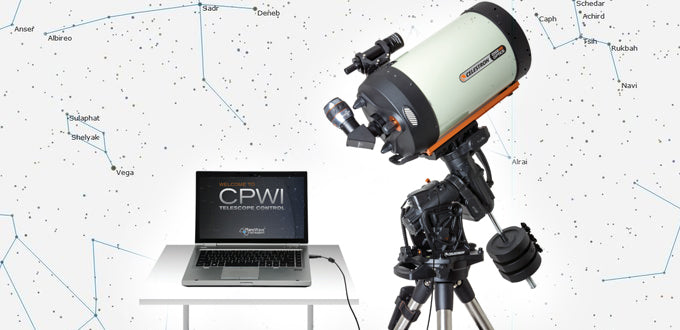 |
January 21 - Full Moon, Supermoon: Early Native Americans dubbed this the “Wolf Moon” because it occurred during the time of year when hungry wolf packs howled in the bitter cold as they hunted for prey. It’s also the first of three Supermoons in 2019. The moon will be at its closest approach to Earth and will look slightly larger and brighter than normal.
|
 |
January 20/21 - Total Lunar Eclipse: The moon will pass completely through the Earth's shadow, or umbra, and turn a rusty red color during totality. This total lunar eclipse has the potential to delight millions of observers; it will be visible throughout most of North America, South America, the eastern Pacific Ocean, western Atlantic Ocean, extreme western Europe, and extreme western Africa.
|
 |
January 22 - Conjunction of Venus and Jupiter: Early risers the morning after the lunar eclipse will have a treat waiting for them as they wake up. Two of the brightest planets will be visible within 2.4 degrees of each other in the early morning sky. To view this impressive conjunction, look to the east before sunrise.
|
 |
February 18 - Conjunction of Venus and Saturn: Just after Valentine’s Day, Venus, named for the goddess of love, performs a celestial dance with the ringed planet, Saturn. The two planets will appear to pass within 1.1 degrees of each other in the southeastern sky prior to sunrise. Observing tip: if you have a telescope, use a low powered eyepiece to see both planets in the same field of view!
|
 |
February 19 - Full Moon, Supermoon: After the “Wolf Moon,” early Native Americans gave the next full moon the nickname “Snow Moon” in honor of the heaviest snowfall that usually fell during this month. It was also known as the “Hunger Moon” since the harsh weather made food scarce. It’s the second of three Supermoons this year.
|
 |
March 21 - Full Moon, Supermoon: By March, early Native Americans noticed the earliest signs of spring as the ground began to thaw and earthworms reappeared. That’s why this full moon was known as the “Worm Moon.” It’s the final Supermoon of 2019.
|
 |
Late March - Mars Passes near the Pleiades Star Cluster (M45): Take out your telescope in late March or early April and enjoy this 2fer! Mars and the Pleiades Star Cluster will appear close to one another in the night sky.
|
 |
May 18 - Full Moon, Blue Moon: With spring in full bloom, it makes sense that early Native Americans dubbed this the “Flower Moon.” Because it’s the third of four full moons this spring, it also qualifies as a seasonal Blue Moon. This rare calendar events only happens once every few years, giving rise to the expression “once in a blue moon.” There are usually only three full moons per season, but since full moons occur every 29.53 days, occasionally a season will have four full moons.
|
 |
June 10 - Jupiter at Opposition: The king of the giant gas planets will be at its closest approach to Earth and will be fully illuminated by the Sun. It’s the best night of the year to view Jupiter, which will be at its very brightest and visible all night. Take out your telescope and camera and see if you can capture the Great Red Spot and the four Galilean moons.
|
 |
July 2 - Total Solar Eclipse: Day turns to night for observers in parts of the southern Pacific Ocean, central Chile, and central Argentina during the most exciting celestial phenomenon, a total solar eclipse. Those in the path of totality will observe the Sun's brilliant outer atmosphere, known as the corona. A partial solar eclipse will be visible in most of the southern Pacific Ocean and western South America.
|
 |
July 9 - Saturn at Opposition: The giant ringed planet will be at its closest approach to Earth and will be fully illuminated by the Sun. It’s the best night of the year to view Saturn, which will be at its very brightest and visible all night. Take out your telescope and camera and see if you can capture the rings and Saturn’s most prominent moons.
|
 |
July 16 - Partial Lunar Eclipse: The moon will partially pass through the Earth's darker shadow, or umbra. Unlike a total lunar eclipse, only a portion of the moon will darken during the partial eclipse. Observers throughout most of Europe, Africa, central Asia, and the Indian Ocean can enjoy this celestial event. |
 |
August 12/13 - Perseid Meteor Shower: The Perseids is one of the best and most well-known meteor showers of the year, producing up to 60 meteors per hour at its peak. It is occurs when the Earth passes through a field of debris left over from Comet Swift-Tuttle and runs annually from July 17 to August 24. The Perseids peaks on the night of August 12 and the morning of August 13. Unfortunately, light from the nearly full moon will block out most of the fainter meteors this year, but the Perseids are often bright enough that it may still put on a very good display. Look for meteors to radiate from the constellation Perseus, keeping in mind that they may appear anywhere in the sky.
|
 |
September 14 - Harvest Moon: The full moon closest to the autumnal equinox is called the Harvest Moon. In the days before electricity, farmers relied heavily on the extra moonlight to help them work outside longer to harvest their crops. In the Northern Hemisphere, the time between successive moonrises will be shorter during this period.
|
 |
November 11 - Rare Transit of Mercury Across the Sun: Observers with telescopes equipped with approved solar filters will be able to view Mercury’s small, dark disk moving across the face of the sun. This is a rare event that won’t happen again until 2032 and 2039. This transit will be visible throughout all South America and Central America, parts of North America, Europe, the Middle East, and Africa. |
 |
November 24 - Conjunction of Venus and Jupiter: The two brightest planets appear within 1.4 degrees of each other. Look for this impressive celestial gathering in the western sky just after sunset. |
 |
December 13/14 - Geminids Meteor Shower: The Geminids is considered by astronomers to be the most spectacular meteor shower of the entire year, producing up to 120 multicolored meteors per hour at its peak. Unfortunately, light from the nearly full moon will block out most of the fainter meteors this year, but the Geminids are bright and numerous, so they could still put on a good display. Look for meteors to radiate from the constellation Gemini, keeping in mind that they may appear anywhere in the sky.
|
 |
December 26 - Annular Solar Eclipse: This special eclipse occurs when the Moon passes directly in front of the Sun but is too far away to completely cover it. The result of this special alignment of Sun, Moon, and Earth is the annulus or “ring of fire” that’s visible during mid-eclipse. Unlike a total eclipse, observers won’t be able to view the corona and will need to use approved solar glasses or telescope filters during the entire eclipse. The path of this eclipse begins in Saudi Arabia at sunrise and moves east through southern India, northern Sri Lanka, parts of the Indian Ocean, and Indonesia before ending at sunset in the Pacific Ocean. A partial solar eclipse will be visible throughout most of Asia and northern Australia.
|





